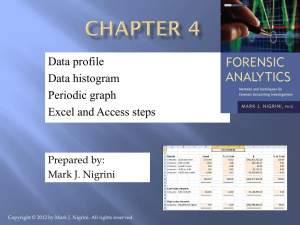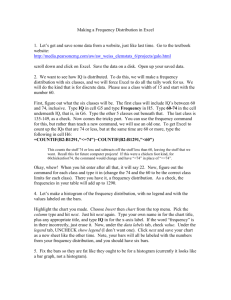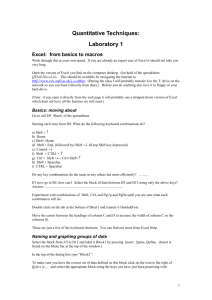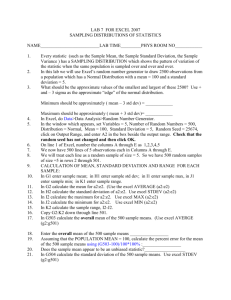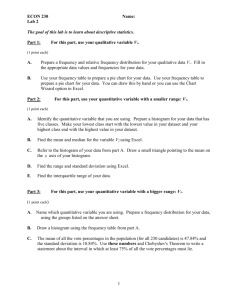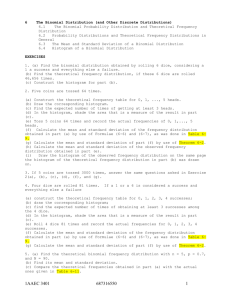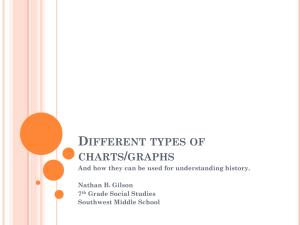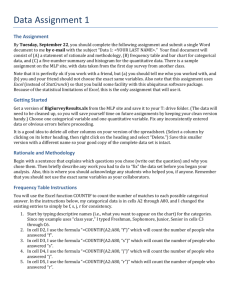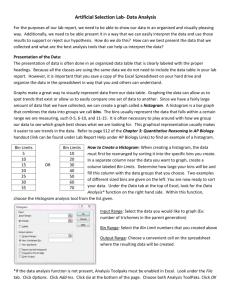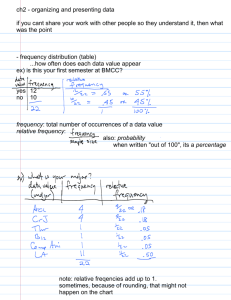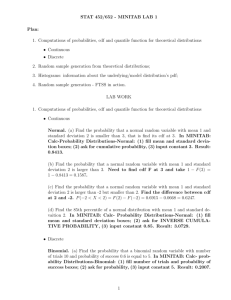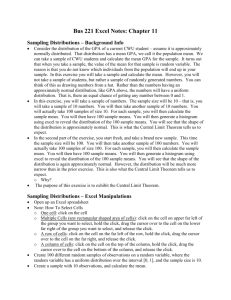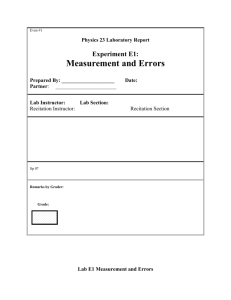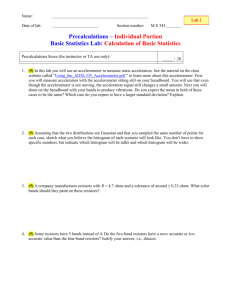Project #2
advertisement
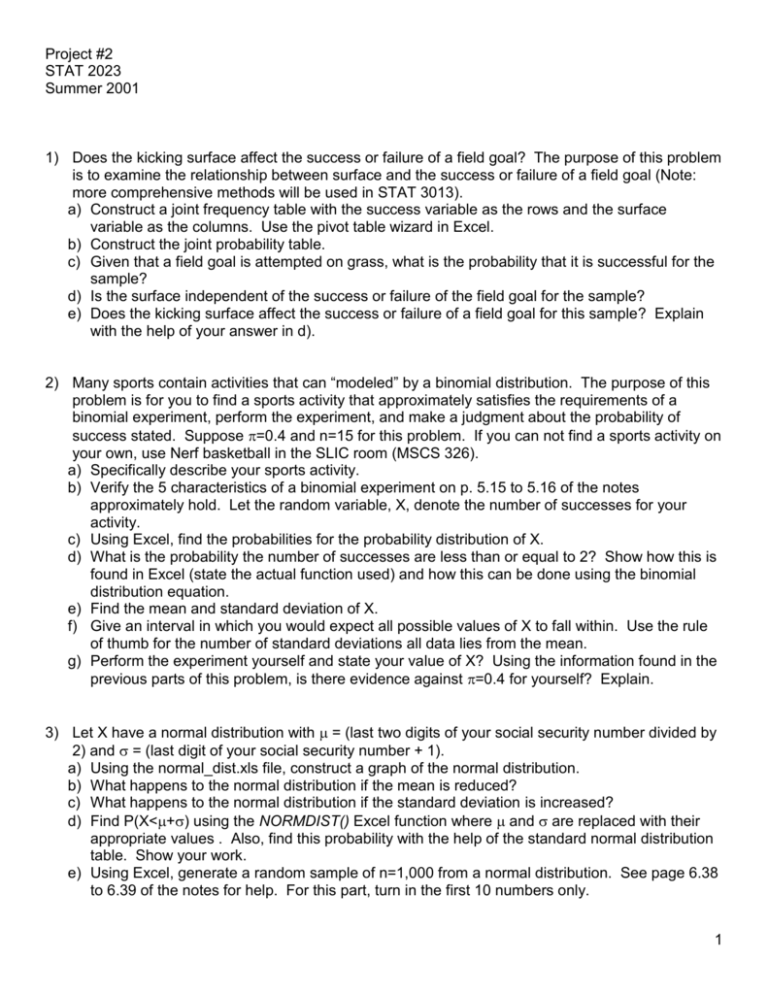
Project #2 STAT 2023 Summer 2001 1) Does the kicking surface affect the success or failure of a field goal? The purpose of this problem is to examine the relationship between surface and the success or failure of a field goal (Note: more comprehensive methods will be used in STAT 3013). a) Construct a joint frequency table with the success variable as the rows and the surface variable as the columns. Use the pivot table wizard in Excel. b) Construct the joint probability table. c) Given that a field goal is attempted on grass, what is the probability that it is successful for the sample? d) Is the surface independent of the success or failure of the field goal for the sample? e) Does the kicking surface affect the success or failure of a field goal for this sample? Explain with the help of your answer in d). 2) Many sports contain activities that can “modeled” by a binomial distribution. The purpose of this problem is for you to find a sports activity that approximately satisfies the requirements of a binomial experiment, perform the experiment, and make a judgment about the probability of success stated. Suppose =0.4 and n=15 for this problem. If you can not find a sports activity on your own, use Nerf basketball in the SLIC room (MSCS 326). a) Specifically describe your sports activity. b) Verify the 5 characteristics of a binomial experiment on p. 5.15 to 5.16 of the notes approximately hold. Let the random variable, X, denote the number of successes for your activity. c) Using Excel, find the probabilities for the probability distribution of X. d) What is the probability the number of successes are less than or equal to 2? Show how this is found in Excel (state the actual function used) and how this can be done using the binomial distribution equation. e) Find the mean and standard deviation of X. f) Give an interval in which you would expect all possible values of X to fall within. Use the rule of thumb for the number of standard deviations all data lies from the mean. g) Perform the experiment yourself and state your value of X? Using the information found in the previous parts of this problem, is there evidence against =0.4 for yourself? Explain. 3) Let X have a normal distribution with = (last two digits of your social security number divided by 2) and = (last digit of your social security number + 1). a) Using the normal_dist.xls file, construct a graph of the normal distribution. b) What happens to the normal distribution if the mean is reduced? c) What happens to the normal distribution if the standard deviation is increased? d) Find P(X<+) using the NORMDIST() Excel function where and are replaced with their appropriate values . Also, find this probability with the help of the standard normal distribution table. Show your work. e) Using Excel, generate a random sample of n=1,000 from a normal distribution. See page 6.38 to 6.39 of the notes for help. For this part, turn in the first 10 numbers only. 1 f) Find a histogram of the data using the Histogram analysis tool in Excel. Compare the histogram to the probability distribution found in problem a). Be careful with your comparisons because the graphs most likely will be on a different scale. g) What would you expect the sample mean and standard deviation to be? Explain your answer. After answering the question, find the sample mean and sample standard deviation of the 1,000 observations. h) Find the proportion of your sampled values that are less than +. Compare the proportion to the probability found in d). Why would you expect these to be close? One way to find the proportion in Excel is to use the COUNTIF() function. For example, suppose my data are in cells A1:A1000. Type this into an empty cell: =COUNTIF(A1:A1000,"<+")/1000 where and are replaced with their appropriate values. i) Copy and paste the 1,000 observations into data_summary.xls so that the summary table, histogram, box plot, and dot plot are updated for your data (see Chapter 3’s Excel files). Print off the resulting summary information. The distribution drawn on the histogram is a normal probability distribution using the sample mean and standard deviation as their population counterparts. The histogram’s y-axis is rescaled so that the probability distribution can be drawn upon it. Does the histogram resemble the normal probability distribution plotted? Explain. 2
